Related Research Articles

Emmeline Pankhurst was a British political activist who organised the British suffragette movement and helped women win the right to vote. In 1999, Time named her as one of the 100 Most Important People of the 20th Century, stating that "she shaped an idea of objects for our time" and "shook society into a new pattern from which there could be no going back". She was widely criticised for her militant tactics, and historians disagree about their effectiveness, but her work is recognised as a crucial element in achieving women's suffrage in the United Kingdom.

The Women's Social and Political Union (WSPU) was a women-only political movement and leading militant organisation campaigning for women's suffrage in the United Kingdom founded in 1903. Known from 1906 as the suffragettes, its membership and policies were tightly controlled by Emmeline Pankhurst and her daughters Christabel and Sylvia. Sylvia was eventually expelled.

The Women's Freedom League was an organisation in the United Kingdom from 1907 to 1961 which campaigned for women's suffrage, pacifism and sexual equality. It was founded by former members of the Women's Social and Political Union after the Pankhursts decided to rule without democratic support from their members.

Teresa Billington-Greig was a British suffragette who was one of the founders of the Women's Freedom League in 1907. She had left the Women's Social and Political Union - also known as the WSPU – as she considered the leadership led by Emmeline Pankhurst and her daughters too autocratic. In 1904, she was appointed by the WSPU as a travelling speaker for the organisation. In Autumn 1906, Billington-Greig was tasked with drumming up support for branches of WSPU in Scotland. On 25 April 1906, she unveiled a 'Votes for Women' banner from the Ladies Gallery during the debate in the House of Commons. In June 1906, she was arrested in a fracas outside of Chancellor of the Exchequer H. H. Asquith's home, and as a result was the first suffragette to be incarcerated in Holloway Prison.
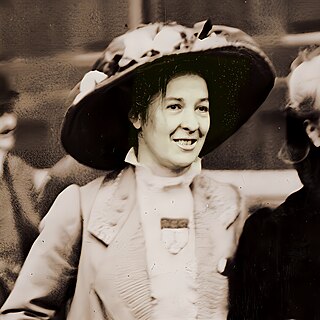
Edith How-Martyn was a British suffragette and a member of the Women's Social and Political Union (WSPU). She was arrested in 1906 for attempting to make a speech in the House of Commons. This was one of the first acts of suffragette militancy. She met Margaret Sanger in 1915 and they created a conference in Geneva. How-Martyn toured India talking about birth control. She had no children and died in Australia.

Charlotte Despard was an Anglo-Irish suffragist, socialist, pacifist, Sinn Féin activist, and novelist. She was a founding member of the Women's Freedom League, the Women's Peace Crusade, and the Irish Women's Franchise League, and an activist in a wide range of political organizations over the course of her life, including among others the Women's Social and Political Union, Humanitarian League, Labour Party, Cumann na mBan, and the Communist Party of Great Britain.
The Women's Peace Council was a group that, during World War I, campaigned for a negotiated end to the conflict. The group's membership was mainly from the Women's Freedom League, a group made up of suffragettes. Many of its members were also pacifists. The Women's Peace Council was founded in 1915 because the leaders of the Women's Freedom League believed that the British government's anti-war efforts were insufficient in ending conflict during World War I and they wanted to bring about negotiated peace. The newly formed Women's Peace Council is a rebirth of the Women's Peace Council from World War I, but it is now a global organization dedicated to peace and well-being, led by women. Their Facebook page describes the purpose of the group as follows: "The Women’s Peace Council will bring together people from different backgrounds to imagine a world without fear and hatred." The co-founders of the newly formed Council are Tezikiah Gabriel, Jayne Hillman, and Deborah Greene. The Charter Members include Dimah Mahmoud, Rosa Davis, Kath Knight, Tracy Chapman, and Jennifer Carolyn King.
The Adult Suffrage Society was one of several organisations formed in the United Kingdom during the Victorian and Edwardian eras, with the objective of campaigning for the extension of voting rights to women. Unlike bodies such as the Pankhursts' Women's Social and Political Union, the Adult Suffrage Society did not find acceptable the extension of the franchise to women on the same restricted terms that it was then given to men—that is, on the basis of a property qualification that excluded the majority of the working class. It wanted full adult suffrage, the unrestricted right to vote, for all adults aged 21 or over. The society's members were often referred to as "adultists".
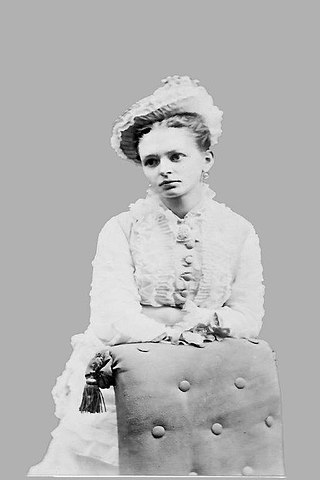
Alice Abadam was a Welsh suffragette, feminist and public speaker.
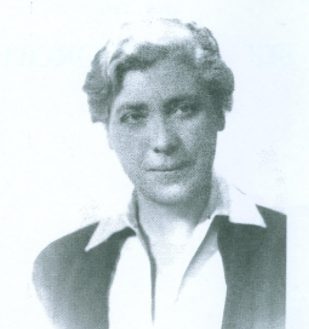
Dorothy Elizabeth Evans was a British feminist activist and suffragette. On the eve of World War I she was a militant organiser for the Women's Social and Political Union twice arrested in Belfast on explosives charges. She broke with Christabel Pankhurst and the WSPU in 1914 over their support for the war, and remained until the end of her life an active peace and women's equality campaigner.
Kate Harvey was an English suffragist, physiotherapist, and charity worker. Profoundly deaf and widowed at a young age, she operated a home for women and children, and then later for disabled children. She participated in the Women's Tax Resistance League and was jailed for her refusal to pay tax if she were not allowed the right to vote. She was the first person imprisoned for failure to pay a tax under the Insurance Act.
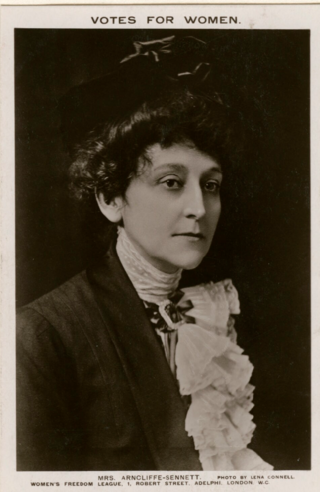
Alice Maud Arncliffe Sennett also known with the stage name of Mary Kingsley was an English actress and suffragist and a suffragette, arrested four times for her activism.

Alice Schofield or Alice Schofield Coates was a British suffragette and politician. She campaigned for women to have the vote and later campaigned for the legislation to give women rights to equal pay.
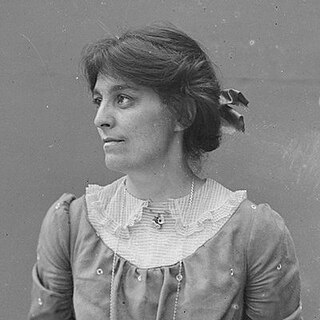
Mabel Kate Tuke, born Mabel Kate Lear was a British suffragette known for her role of honorary secretary of the militant Women's Social and Political Union.
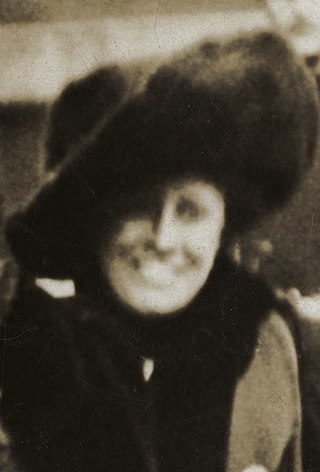
Emma Sproson, was a suffragette, then a suffragist, socialist, politician and women's rights activist. Active in the Midlands and from a working class background, she became Wolverhampton's first female councillor, gaining the nickname "Red Emma" in the process.

Lucy Minnie Baldock was a British suffragette. Along with Annie Kenney, she co-founded the first branch in London of the Women's Social and Political Union.
Isabella Bream Pearce was a socialist propagandist and suffrage campaigner. She was the vice-president of the Glasgow Labour Party, president of the Glasgow Women's Labour Party, and a member of the Cathcart School Board.
Elizabeth Knight was a British physician and campaigner for women's suffrage. She was treasurer and a financial supporter of the Women's Freedom League which was a non-violent and anti-war suffrage group.
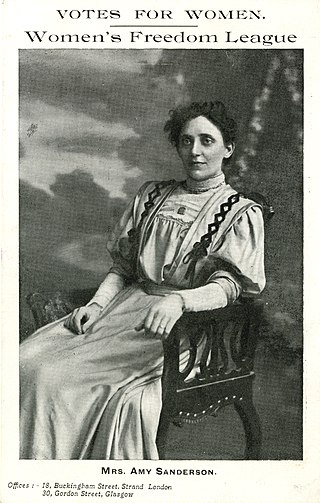
Amy Sanderson née Reid (1876–1931), was a Scottish suffragette, national executive committee member of the Women's Freedom League, who was imprisoned twice. She was key speaker at the 1912 Hyde Park women's rally, after marching from Edinburgh to London, and, with Charlotte Despard and Teresa Billington-Greig, was a British delegate to the 1908 and 1923 international women's congresses.
Florence Earengey was a British suffragette and a member of the Women's Freedom League.
References
- 1 2 3 "Dare to be Free - the Women's Freedom League". LSE History. 17 October 2018. Retrieved 23 September 2023.
- ↑ "Miss Irene Fenwick Miller / Database - Women's Suffrage Resources". www.suffrageresources.org.uk. Retrieved 23 September 2023.
- 1 2 3 4 5 6 "Spartacus Educational: The Vote" . Retrieved 11 April 2024.
- 1 2 "Eustance, Claire Louise, Daring to be Free, DPhil Thesis, 1993: University of York, p71" (PDF). Retrieved 12 April 2024.
- ↑ "Eustance, Claire Louise, Daring to be Free, DPhil Thesis, 1993: University of York, p71, 75" (PDF). Retrieved 12 April 2024.
- ↑ "Eustance, Claire Louise, Daring to be Free, DPhil Thesis, 1993: University of York, p75" (PDF). Retrieved 12 April 2024.